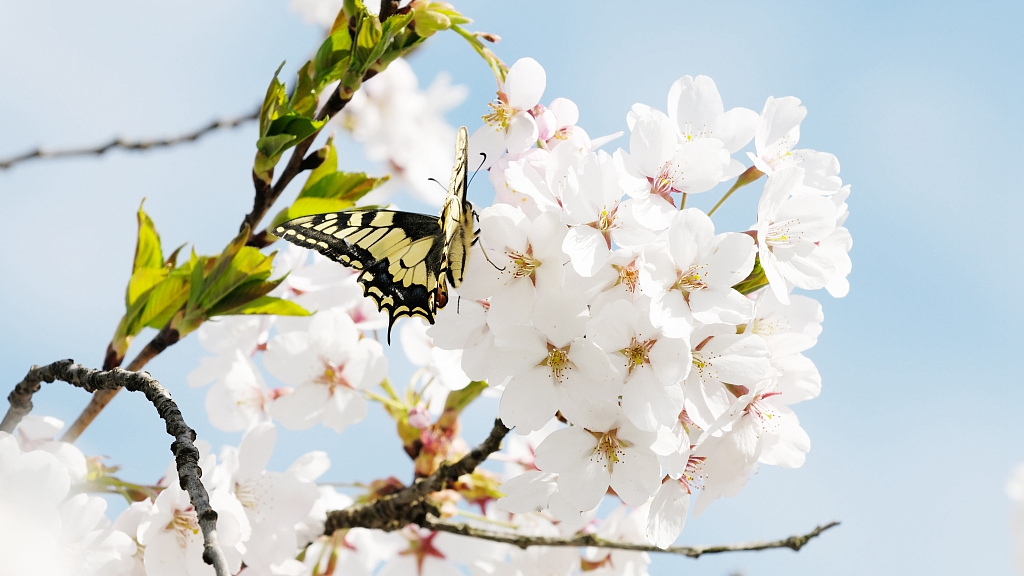
Apricot blossoms are such a delightful sight that they spawned an amazing collection of literature work and inspired wordsmiths.
"Spring's colors fill the garden but cannot all be contained, for one branch of red apricot blossom peeps out from the wall," wrote Ye Shaowong, a poet from the Song Dynasty (960-1279).

Ancient poems described the beauty of apricot blossoms in spring and expressed the feelings that the blooms evoke in authors.

These blossoms have five petals in either red, white, pink, or somewhere in between. When the spring arrives, they start to bud and the color changes to bright red. As the bud turns into a flower, the color fades into white or pink.

The apricot tree is widespread in China, but people across the country see it in different ways.
Southerners tend to view the blossoms as delicate and elegant, while those residing in Western China appreciate the flower's toughness as it grows on mountain chains.

Northwest China's Xinjiang Uygur Autonomous Region is home to the largest wild apricot forest in the country. It covers nearly 5,000 hectares in mountain valleys, earning the nickname "Apricot blossoms valley."


China's Flora Tour
From the wetlands along the coast to the dense rainforests hidden in the southwest, China boasts an array of plant species. In this series, we will go on a tour to learn about some of the most representative flora in different provinces and see how they live in harmony with the local geography and climate.
Read more:
China's Flora Tour: Fine jade flowers
China's Flora Tour: Camellia – queen of winter flowers
China's Flora Tour: Why flowers on plateaus are often blue?
China's Flora Tour: Lady's slipper orchids
China's Flora Tour: Narcissus – a flower full of myths
(All images via VCG, cover image by CGTN's Yu Peng)
(If you want to contribute and have specific expertise, please contact us at nature@cgtn.com.)

Copyright © 2018 CGTN. Beijing ICP prepared NO.16065310-3
Copyright © 2018 CGTN. Beijing ICP prepared NO.16065310-3